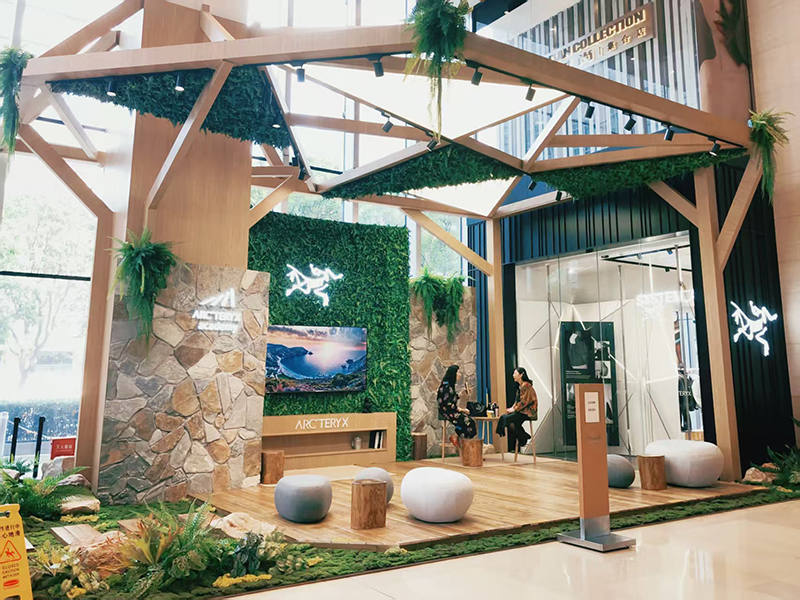Succulent Pairings for 3D Artificial Vertical Gardens: Creating Stunning, Low-Maintenance Displays
Succulents are a natural fit for 3D artificial vertical gardens, offering striking shapes, vibrant colors, and minimal upkeep. While artificial succulents lack the biological needs of living plants, their design flexibility allows for creative combinations that mimic natural ecosystems. Below are strategies to achieve visually balanced and ecologically inspired arrangements.

Artificial succulents come in a range of hues, from muted greens to bold pinks and purples. Thoughtful color pairing enhances depth and prevents monotony in vertical installations.
Monochromatic Schemes: Using varying shades of green—such as lime, sage, and emerald—creates a calming, cohesive look. This approach works well in minimalist or modern spaces where subtlety is key.
Complementary Contrasts: Pair succulents with contrasting colors, like deep purple with chartreuse or silver-blue with coral. These combinations draw attention to the garden’s 3D structure by highlighting different planes and textures.
Gradient Transitions: Arrange succulents from light to dark tones to create a sense of movement. For example, place pale pink varieties at the top and transition to deep magenta at the base, guiding the eye downward.
The diverse shapes of succulents—rosettes, spiky columns, and trailing vines—add visual interest to vertical gardens. Mixing textures prevents flatness and emphasizes the garden’s dimensionality.
Rosette-Dominated Arrangements: Cluster round, layered succulents like echeveria or hen-and-chicks to create focal points. These forms work well in central panels or areas with recessed depths.
Spiky and Columnar Accents: Incorporate taller, pointed varieties such as agave or aloe to break up rounded shapes. Place these along edges or protruding sections to add height and drama.
Trailing Elements for Depth: Use artificial string-of-pearls or burro’s tail succulents to cascade from higher panels. This technique softens sharp angles and mimics the natural growth patterns of living plants.
Vertical gardens thrive on depth, and artificial succulents can be strategically layered to enhance this effect without the constraints of real-plant growth habits.
Foreground and Background Separation: Position larger, bolder succulents in the foreground and smaller, delicate varieties in the background. This creates an illusion of distance, even in compact spaces.
Overlapping Panels: Design the garden with overlapping sections to allow succulents to “spill” from one layer to the next. This approach works particularly well with trailing or sprawling forms.
Vertical Spacing for Airflow: Leave small gaps between succulent clusters to prevent visual clutter. In artificial designs, these gaps also reduce dust accumulation and make cleaning easier.
Even artificial succulents benefit from arrangements that mimic how they grow in the wild. This authenticity makes the garden feel intentional rather than artificial.
Clustering by Species: Group similar succulents together, as they would naturally form colonies in desert or rocky environments. For example, place several echeveria varieties in a tight cluster to replicate their rosette-forming behavior.
Asymmetrical Balance: Avoid perfectly symmetrical layouts, which can look stiff. Instead, offset larger succulents with smaller ones and vary their orientations to create a more organic feel.
Rock and Gravel Accents: Incorporate artificial stones or pebbles around succulent bases to mimic their native habitats. These elements anchor the design and add tactile contrast.
By focusing on color, texture, layering, and naturalistic arrangements, artificial succulents can transform 3D vertical gardens into vibrant, eye-catching displays. Their durability and versatility make them ideal for both indoor and outdoor applications, where they provide year-round beauty without the need for watering or pruning.
Contact: Amy
Phone: 86-15311787313
E-mail: info@foszmac.com
Whatsapp:86-15311787313
Add: Fengtai District, Dacheng Road, No.24 Building, Room 203, Beijing, China